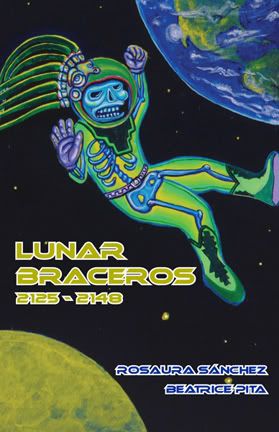 Adelsverein: The Gathering. By Celia Hayes, Strider Nolan Media, Inc., 2008, 365 pages, http://www.celiahayes.com/ available at Amazon
Adelsverein: The Gathering. By Celia Hayes, Strider Nolan Media, Inc., 2008, 365 pages, http://www.celiahayes.com/ available at Amazon
Review by Dick Stanley, author of Leaving The Alamo: Texas Stories After Vietnam, The Texas Scribbler at http://texasscribbler.com/
"This is a dandy historical novel of the German settlement of the Hill Country which I recommend with caveats. I was familiar with the basic facts but learned a few things, such as the details of Baron Meuesbach's peace treaty with the Comanches. It was unique in
As a two-time indie author, I finally realized that I had yet to read someone else's indie book. I figured author Celia Hayes (the blogosphere and Milblogging's "Sgt. Mom") and her Adelsverein Texana trilogy was the best place to start. It was a good decision. This first book of the trilogy paints an epic in satisfying old-fashioned style that effectively lures a lover of such reads on and on.
Now the caveats: Hayes leaves almost nothing to the reader's imagination. That can grate on folks raised on movies and television. Unlike readers of the 19th century, we don't need exhaustive description of major and minor actors. I also could have done without all the adverbs. Seemingly every speech is characterized, rather than trusting to the context to convey the meaning. Nevertheless, the main characters are real and lovable and their tragedies and joys won my empathy and spurred my curiosity to find out what would happen to them next.
I was appalled at the typos and misspellings, by my count on 46 of the book's 365 pages. Surely, most of them could have been avoided, and a second edition to fix them is warranted. Still, Hayes is sufficiently talented and her story so well crafted that I will buy the second installment, "The Sowing." It concerns the Civil War years, during which the real German settlers had the ill-luck to be Unionists in a predominantly Confederate state. I want to find out how the Beckers and the Steinmetzs fare. Tragedy ahead, I expect. I'll be hoping, though, to find that the proofreading has improved."








 Raul Ramos makes a guest posting on the University of North Carolina Press blog regarding his Beyond the Alamo: Forging Mexican Ethnicity in San Antonio, 1821-1861.
Raul Ramos makes a guest posting on the University of North Carolina Press blog regarding his Beyond the Alamo: Forging Mexican Ethnicity in San Antonio, 1821-1861.  Rails Around Houston. By Douglas L. Weiskopf. Charleston, SC: Arcadia Publishing, 2009. paperback, many photos, 128 pages, ISBN 9780738558844, the ticket's only $21.99, round trip, front to back. All aboard!
Rails Around Houston. By Douglas L. Weiskopf. Charleston, SC: Arcadia Publishing, 2009. paperback, many photos, 128 pages, ISBN 9780738558844, the ticket's only $21.99, round trip, front to back. All aboard!
